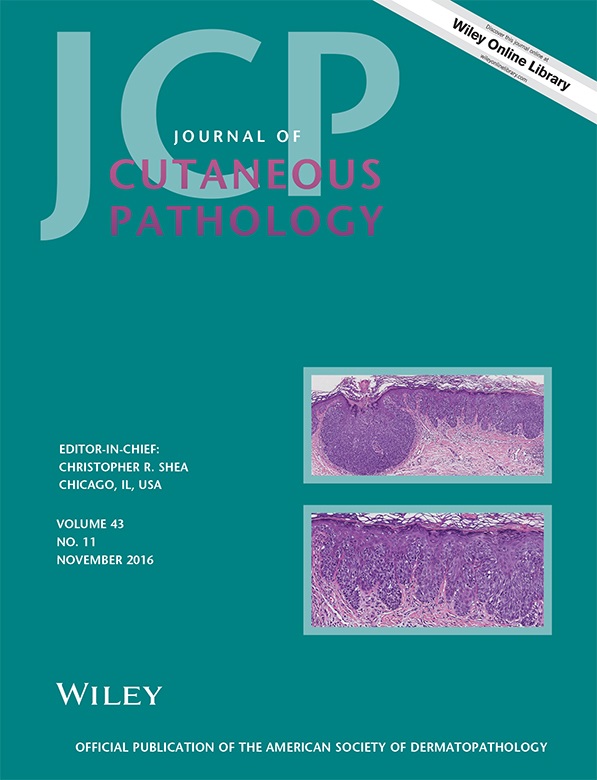ETV6 rearrangement in a case of mammary analogue secretory carcinoma of the skin
Abstract
Mammary analog secretory carcinoma of salivary glands is a relatively recently recognized entity that harbors the ETV6-NTRK3 fusion transcript. To date, only rare cases of mammary analog secretory carcinoma of the skin have been reported. A 57-year-old man presented with a 6.0 cm cystic mass in the axilla, involving the dermis and superficial subcutis. Microscopically, the tumor exhibited nodular aggregation of tubular and microcystic structures embedded in the dense fibrotic and hyalinized stroma. Characteristic ‘colloid-like’ eosinophilic secretory material was present within intraluminal spaces. Tumor cells were largely characterized by vesicular nuclei with inconspicuous nucleoli and pink vacuolated cytoplasm. With respect to immunohistochemistry, tumor cells were intensely positive for AE1/AE3, Cam 5.2, and CK7, whereas Ber-EP4 and CEA were completely negative. A dual color break-apart fluorescence in situ hybridization probe identified rearrangement of the ETV6 gene locus on chromosome 12. The patient is alive with no evidence of recurrent disease or metastasis 3 years after the initial surgery. In conclusion, we report a rare example of mammary analog secretory carcinoma of the skin with ETV6 rearrangement. Awareness of this unique cutaneous tumor and subsequent reporting of additional cases is necessary for better characterization of its completely clinicopathologic spectrum.




